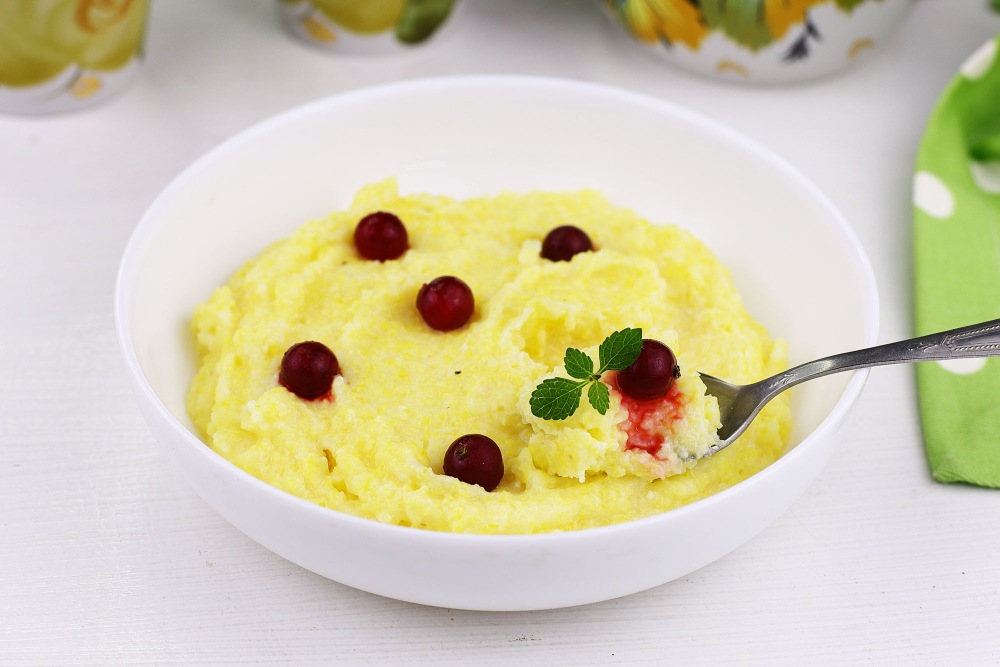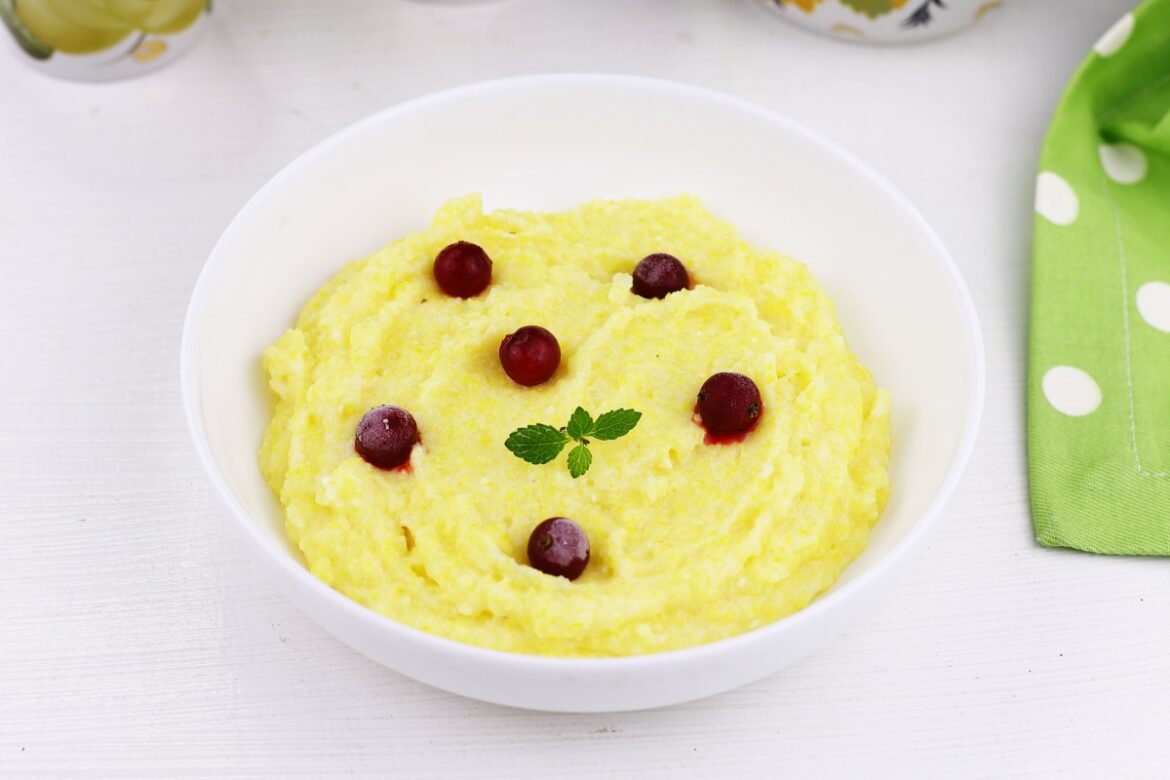Detailed step-by-step recipe with photos: Step 1
-
Prepare the necessary ingredients for the recipe for corn porridge in a slow cooker with milk.
Corn grits come in different degrees of grinding, and each is suitable for a specific type of dish.
Groats coarse grind (classic corn grits) — This is tougher and slow-cooking, but is ideal for hearty porridges with a rich texture. Groats medium grind – the most versatile option for preparing corn porridge in a slow cooker. It cooks quickly and makes the porridge softer and creamier. If you want a smooth consistency, this is the best choice. Groats fine grind (corn semolina or cornmeal) — ideal for children's cereals or those who prefer a very smooth texture without solid particles. However, such cereals can give a too viscous consistency if the correct proportions of liquid are not observed.
Corn grits should be bright yellow. If it is dull or too pale, it may be old or improperly stored. High-quality corn grits have a fresh, slightly sweet smell. If the smell is sour or musty, this may indicate that the cereal was improperly stored or expired. Pay attention to the packaging. It must be sealed and without damage. It is better to choose cereals in packages with transparent film, so that you can inspect the cereal itself for dirt or foreign particles. Be sure to check the expiration date. Even if the packaging looks normal, old cereal may lose its taste and will not give the desired result when cooked.
Whole milk (3.2% and above) is the best choice for preparing corn porridge in a slow cooker. It will give the porridge a rich taste, softness and creamy texture. If you want a higher calorie and filling meal, whole milk is a better option. Skim milk (1-1.5%) – If you are watching your calories, you can use reduced fat milk. However, it is worth considering that porridge with such milk will be less rich and more liquid.
Plant milk (almond, soy, coconut and others) is an excellent option for vegetarians, vegans or people with lactose intolerance. Almond milk will give the porridge a soft, nutty taste, while coconut milk will give it a light exotic note. It is better to choose milk without additives such as sugar or flavorings.
-
Step 2
Pour corn grits into a deep bowl. Pour in cold water. Rinse well, rubbing the cereal between your fingers to remove any dust, flour or other small particles that may be on the surface of the cereal. Usually it is enough to rinse the cereal two or three times until the water becomes clear.
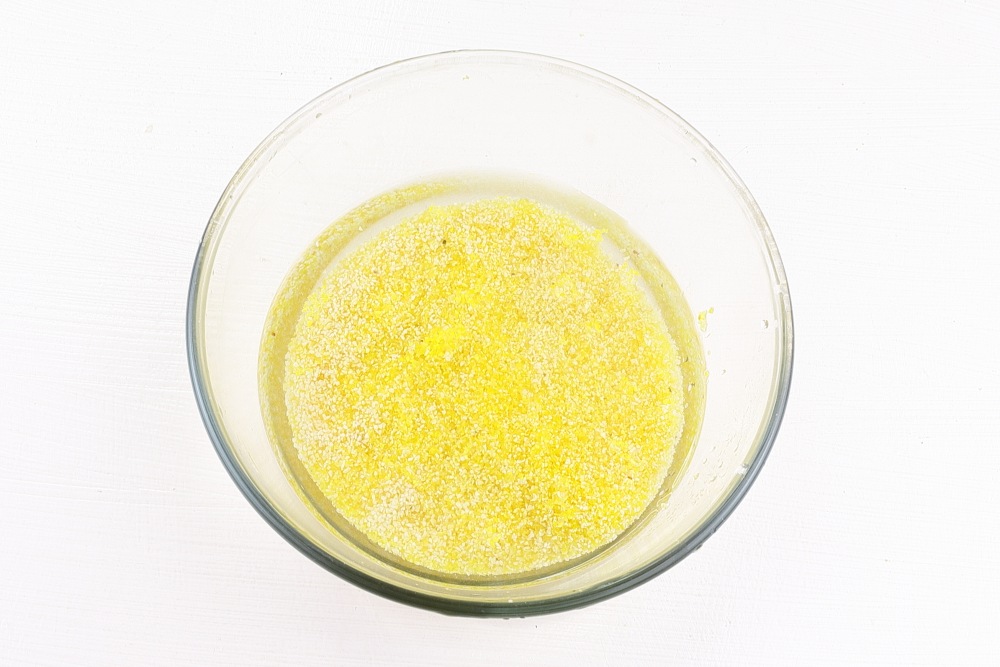
-
Step 3
Pour the prepared cereal into the multicooker bowl. My bowl is 5 liters.
Watch the master class “HOW TO SPEND NO MORE THAN 1 HOUR A DAY IN THE KITCHEN AND AT THE same time feed everyone tasty and healthy”👉🏻HERE
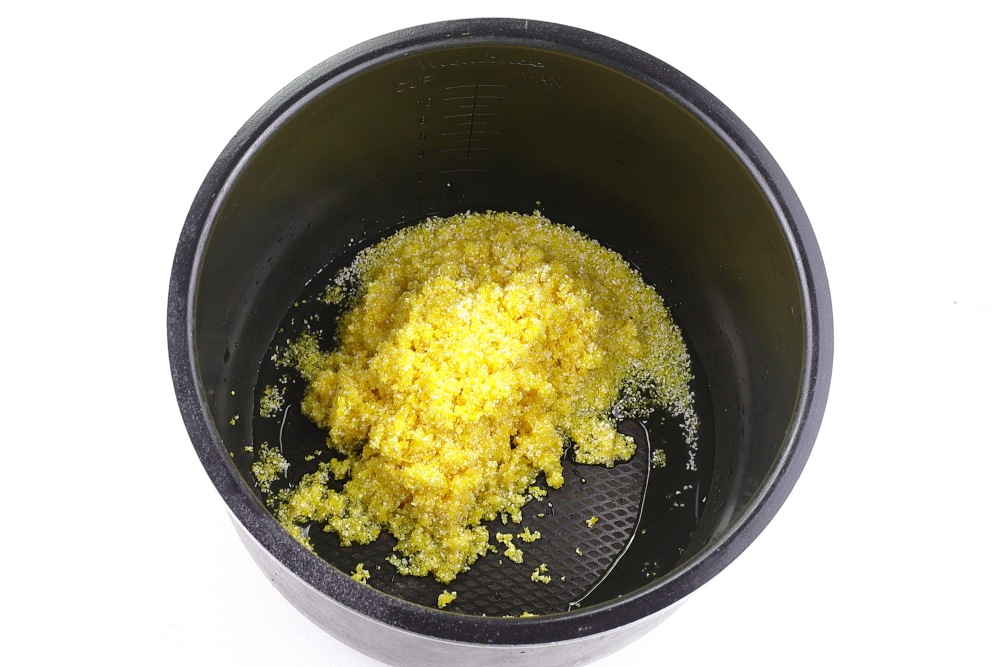
-
Step 4
Add salt and sugar.
Salt not only brings out the flavor, but also helps balance the sweetness of the milk and sugar. The amount of salt and sugar can be adjusted depending on your preferences if you want a sweeter or saltier porridge.
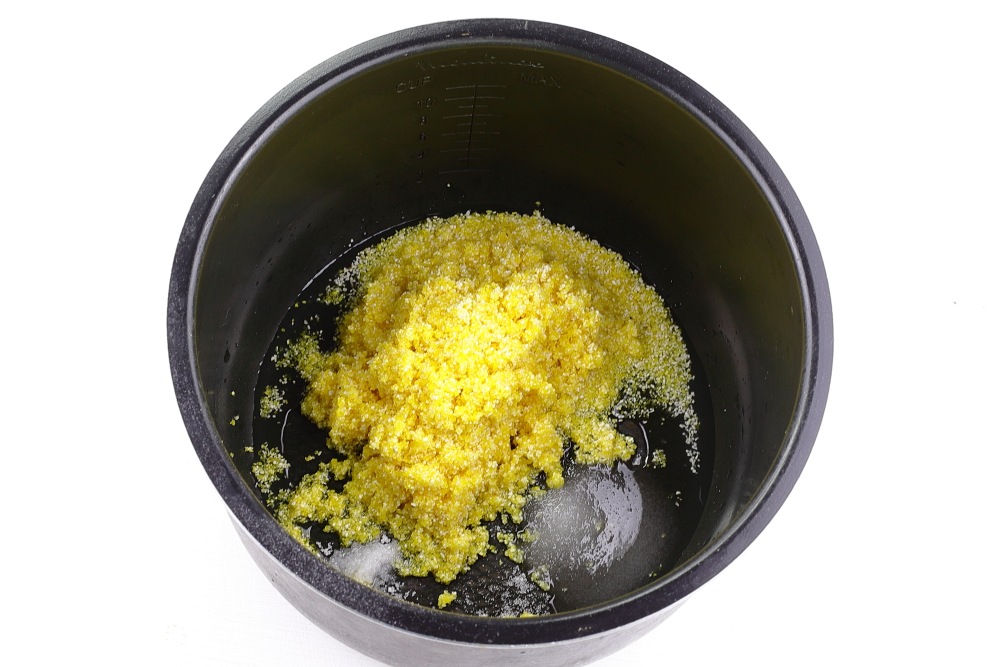
-
Step 5
Pour milk and water into the multicooker bowl.
To prepare corn porridge in a slow cooker, it is important to choose the right ratio of liquid and cereal in order to obtain the desired consistency — from more liquid and creamy to dense and crumbly. The ratio of liquid to grain will depend on your preference and how thick or soft you like your porridge.
So that the porridge is soft, a little more liquid and creamy texturethe ratio should be approximately 1 part cereal to 4 parts liquid. For 150 g of corn grits, use about 600 ml of milk and 100 ml of water (total 700 ml of liquid). This will provide a consistency that is closer to a thin porridge.
For porridge medium thickness It is better to stick to a ratio of 1 part cereal to 3 parts liquid. In this case, for 150 g of cereal you will need approximately 500 ml of milk and 100 ml of water (total 600 ml of liquid). This porridge will be quite dense, but not viscous. This is exactly what we will prepare in the recipe.
So that there is porridge thicker and not too creamy, you will need 1 part cereal to 2 parts liquid. For 150 g of cereal you will need 300 ml of milk and 100 ml of water (total 400 ml of liquid). This porridge will be dense and almost not spreadable, ideal for those who prefer porridge with a distinct grain texture.
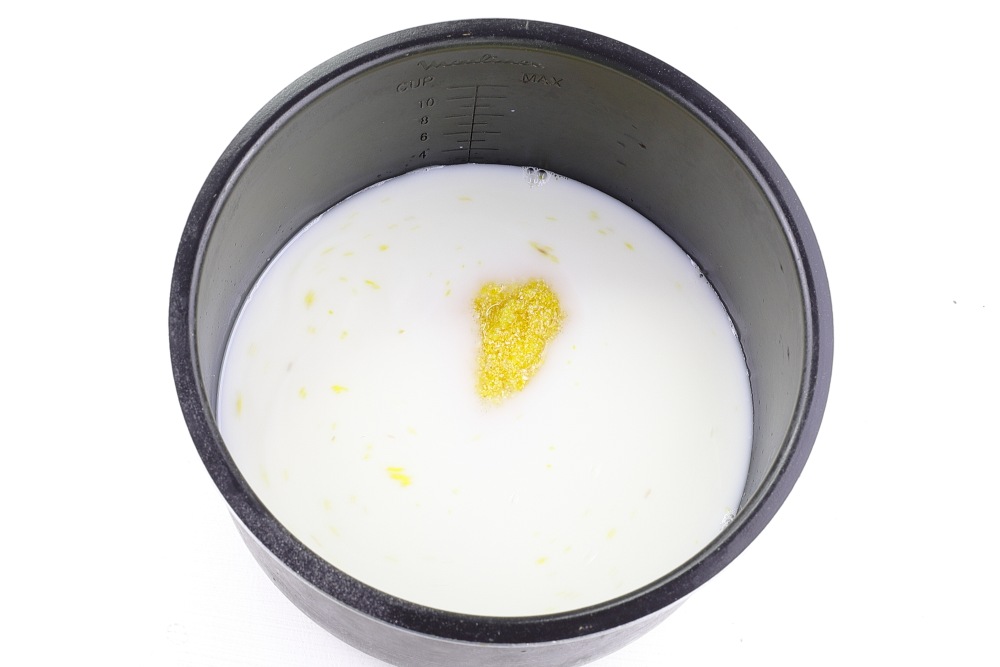
-
Step 6
Mix the contents of the multicooker bowl with a spatula. Cover tightly with a lid. Launch the Milk Porridge program. This is the standard mode for cooking porridges, which usually adjusts the temperature and time so that the porridge cooks correctly without burning.
In most multicookers, this mode automatically selects the required time depending on the volume of liquid and cereal. In my case, I use a multicooker-pressure cooker for cooking and this program takes only 10 minutes. In other multicookers, the cooking time for milk porridge can range from 20 to 40 minutes, depending on the power of the device and the selected program. Therefore, it is important to always focus on the settings of your multicooker.
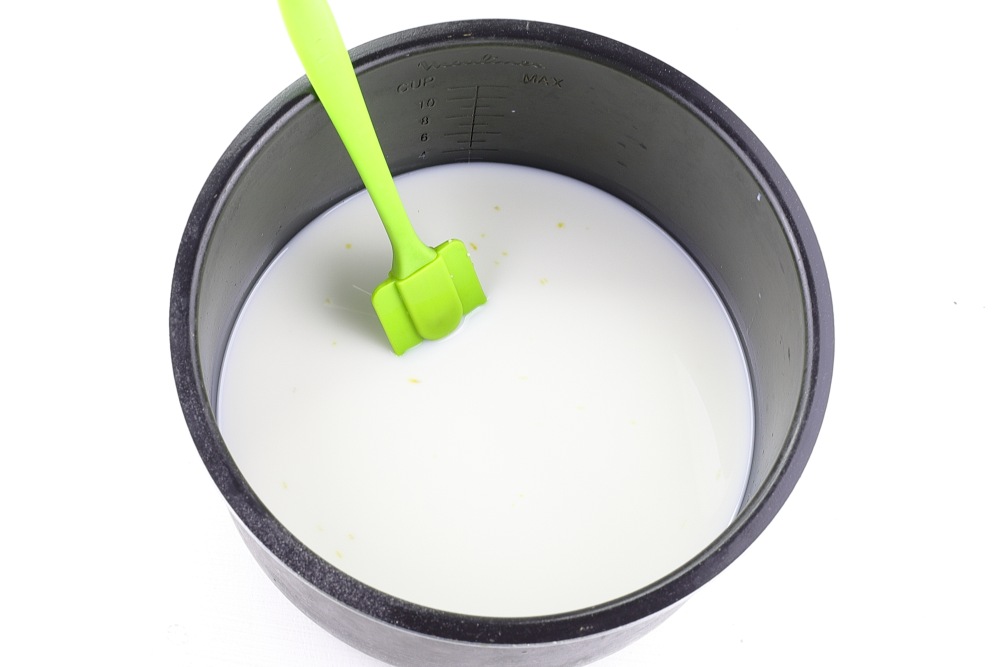
-
Step 7
Disable the program and device after the beep. Open the lid. After opening the lid, check to see if the porridge is too thin or thick. If it is too liquid, you can turn on the multicooker for a couple more minutes so that the excess moisture evaporates. If it is too thick, you can add a little milk or water and mix gently.
Add butter to taste. Gently stir the butter into the hot porridge until it dissolves. This will make the porridge smoother, and its taste even softer and richer.
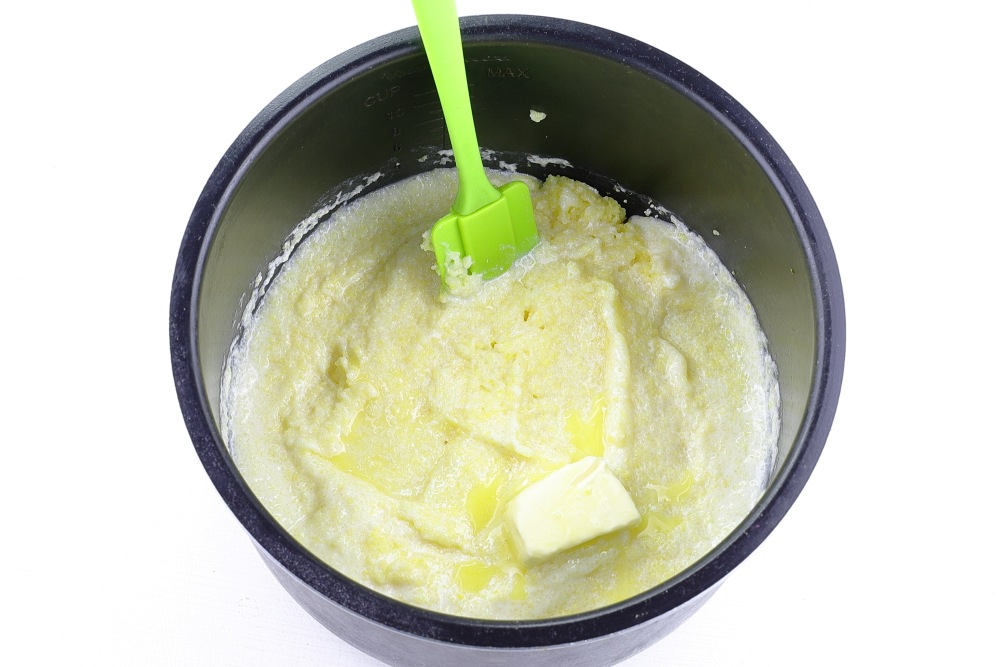
-
Step 8
Corn porridge in a slow cooker with milk is ready. Serve immediately.
You might be interested in:
How to freeze ready-made porridge
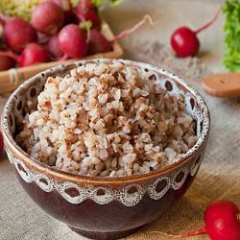
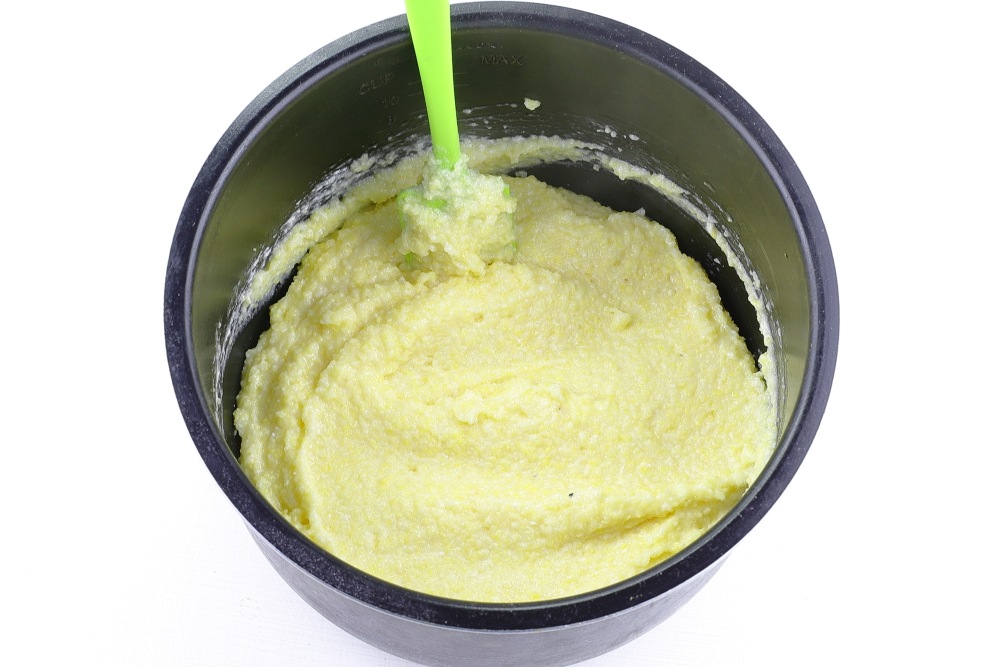
-
Step 9
Bon appetit!
📌 For other recipes for PORRIDGE IN A MULTICOOKER, SEE 👉🏻 HERE
